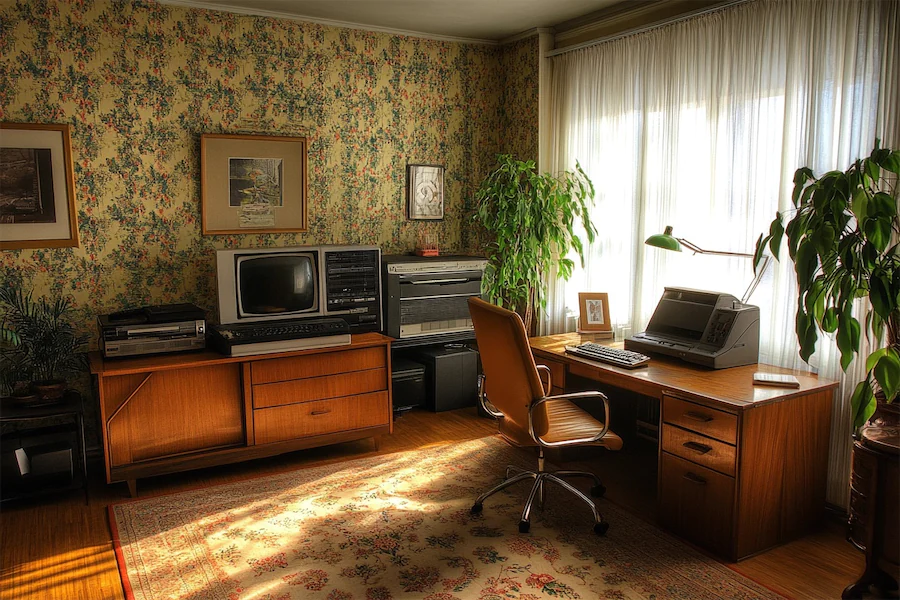A Retro Office Room captures the charm and nostalgia of past decades, blending vintage aesthetics with modern functionality to create a unique and inspiring workspace.
Introduction to Retro Office Rooms
Retro office design draws inspiration from mid-20th-century styles, incorporating bold colors, geometric patterns, and vintage furnishings. This approach not only adds character to the workspace but also fosters a creative and energetic atmosphere.
History and Origins of Retro Office Rooms
The retro style emerged as a celebration of design trends from the 1950s to the 1970s, reflecting the optimism and innovation of the post-war era. Incorporating retro elements into office design became popular as a way to evoke nostalgia and inject personality into work environments.
Key Features of Retro Office Rooms
- Vintage Furniture: Inclusion of mid-century modern desks, chairs, and storage units characterized by clean lines and organic shapes.
- Bold Color Schemes: Use of vibrant hues such as mustard yellow, avocado green, and burnt orange to create a lively atmosphere.
- Geometric Patterns: Incorporation of patterned wallpapers, rugs, or artwork featuring geometric designs typical of the era.
- Retro Accessories: Display of vintage items like rotary phones, typewriters, and classic desk lamps to enhance the nostalgic feel.
- Natural Materials: Use of wood, metal, and glass to reflect the material trends of mid-century design.
Applications of Retro Office Rooms
This design style can be applied to various office settings:
- Home Offices: Creating a personalized and inspiring workspace that reflects individual taste and creativity.
- Creative Agencies: Designing environments that stimulate innovation and reflect a dynamic company culture.
- Co-working Spaces: Offering unique and stylish work areas that appeal to a diverse clientele seeking inspiration.
Considerations When Designing a Retro Office Room
- Balance: Ensure a harmonious blend of retro elements with modern amenities to maintain functionality without overwhelming the space.
- Authenticity: Incorporate genuine vintage pieces or high-quality reproductions to achieve an authentic retro aesthetic.
- Ergonomics: Select furniture that meets contemporary ergonomic standards to promote comfort and productivity.
- Lighting: Utilize a mix of natural light and retro-inspired lighting fixtures to create a warm and inviting ambiance.
Conclusion
A Retro Office Room combines nostalgic design elements with modern functionality, resulting in a workspace that is both stylish and inspiring. By thoughtfully integrating vintage furnishings, bold color schemes, and retro accessories, one can create an environment that reflects the charm of past eras while supporting contemporary work needs.
